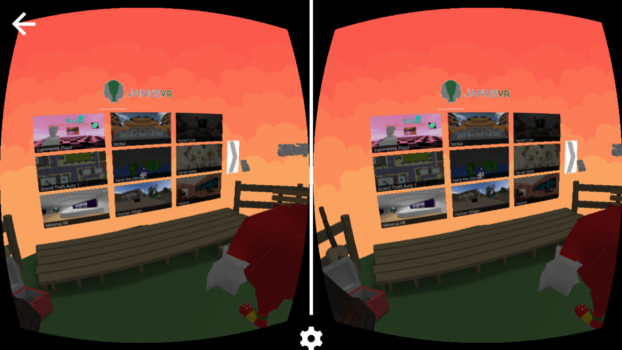
Blockchain — the technology powering Bitcoin and other cryptocurrencies — is coming to virtual reality.
Today, High Fidelity, the new VR platform from Second Life founder Philip Rosedale, announced the launch of the Virtual Reality Blockchain Alliance, which is dedicated to using the blockchain to create an independent identity system for VR platforms.
The basic idea behind the blockchain is that there’s a list, and everyone has a copy of the same list. To make sure that nobody can go back and change earlier items, there’s a built-in cryptographic lock.
You can use the blockchain to track financial transactions, business contracts, and, of course, cryptocurrency purchases. Pretty much anything can be stored in that list.
You can share the list with just your business partners, or with members of your financial network, or with the general public. The Bitcoin blockchain, for example, is a public ledger, which allows people to see money moving from one Bitcoin wallet to another.
The Virtual Reality Blockchain Alliance plans to create just this kind of public list, but of virtual identity information instead of Bitcoin transactions.

“A public blockchain is the ideal platform to create a trusted, secure and verifiable identity,” Rosedale said in today’s announcement. “Instead of being splintered across multiple services, all your identifying information, all your assets could be stored on a blockchain, accessible on any platform.”
The first member of the alliance, besides High Fidelity, is JanusVR. Members of the alliance will be able to not only read the information in the blockchain, but add to it as well to register assets and record transactions.
High Fidelity and JanusVR will be able to recognize each other’s avatar identities, he said.
“Users of both services will be able to control what information they share or keep private for each experience and tailor how they present themselves,” said Rosedale. “Together we’ll add more features to our identity platform to help build trust as people traverse VR.”

JanusVRÂ turns web pages into immersive, multi-user 3D environments connected by portals. JanusVR takes advantage of WebVR, which means that almost any browser can provide access to the 3D environments, on both desktops and mobile devices. On mobile phones, surfing to one of these sites also brings up a VR icon which toggles a side-by-side VR view, so that people with VR headsets can be immersed in the destinations.
“We believe in the disruptive power of decentralized platforms, and of the power of blockchain technology to provide bridges between previously disparate virtual worlds,” JanusVR said in a statement the company released today.
The blockchain will allow avatars to have a consistent appearance in different worlds, and enable virtual transactions both within and between virtual worlds. “All of this data will exist within a decentralized, public, secure network that will itself allow open exploration and visualization — something we are very enthusiastic about working on.”

High Fidelity also has its own cryptocurrency, the High Fidelity Coin, which can be used both for peer-to-peer transactions and for purchases on the High Fidelity Marketplace. JanusVR will support the High Fidelity Coin as well.
“We’re creating a kind of ‘HFC free-trade zone’ between all the virtual worlds on both platforms,” said Rosedale.
According to Rosedale, HFC is optimized for commerce — for example, transactions are much faster than with Bitcoin.
“You can finish a purchase in about the time to takes to buy something with a credit card in the real world,” he said.
In addition, the currency is designed to avoid the the kind of dramatic price fluctuations that Bitcoin has had, and which make it difficult, if not impossible, to price items. Monetary policy will be regulated in an open process, with voting, smart contracts and other mechanisms to reduce volatility, Rosedale said in an earlier post.
“We will start with the simple strategy of attempting to evenly distribute new currency to many participants with the measurable goal of a stable exchange rate,” he said.
High Fidelity also mains the Digital Asset Registry, a decentralized, publicly viewable ledger that stores digital fingerprints for virtual assets.
- OSCC 2024 Submission Deadline Approaching - October 19, 2024
- AvatarLife Viewer adds video calls, screen sharing - October 19, 2024
- Spooky season brings more visitors to OpenSim worlds - October 15, 2024
